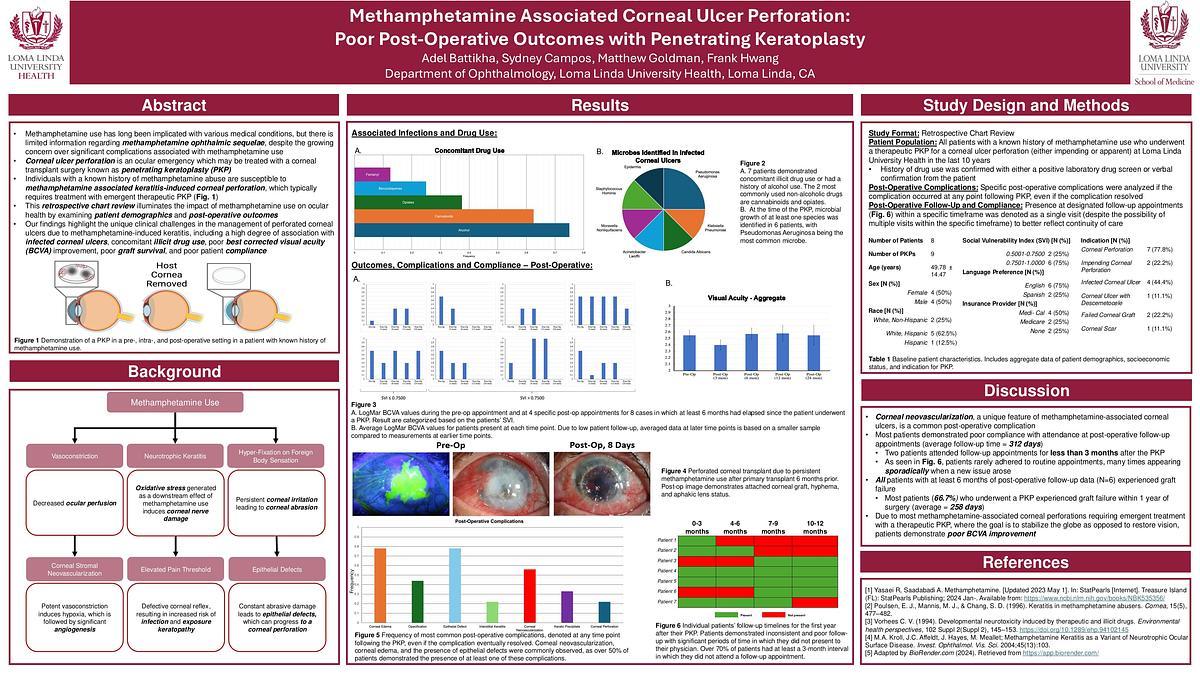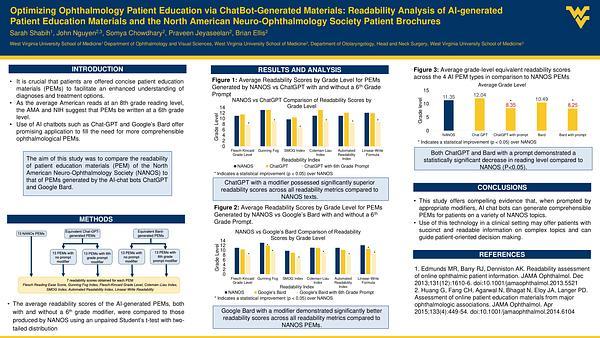
Premium content
Access to this content requires a subscription. You must be a premium user to view this content.
Monthly subscription - $9.99Pay per view - $4.99Access through your institutionLogin with Underline account
Need help?
Contact us
UNDERLINE DOI: https://doi.org/10.48448/whqp-yg45
poster
Methamphetamine Associated Corneal Ulcer Perforation: Poor Post-Operative Outcomes with Penetrating Keratoplasty
Next from AMA Research Challenge 2024

poster
Optimizing Ophthalmology Patient Education via ChatBot-Generated Materials: Readability Analysis of AI-generated Patient Education Materials and the North American Neuro-Ophthalmology Society Patient Brochures
AMA Research Challenge 2024
SS
Sarah Shabih
07 November 2024
